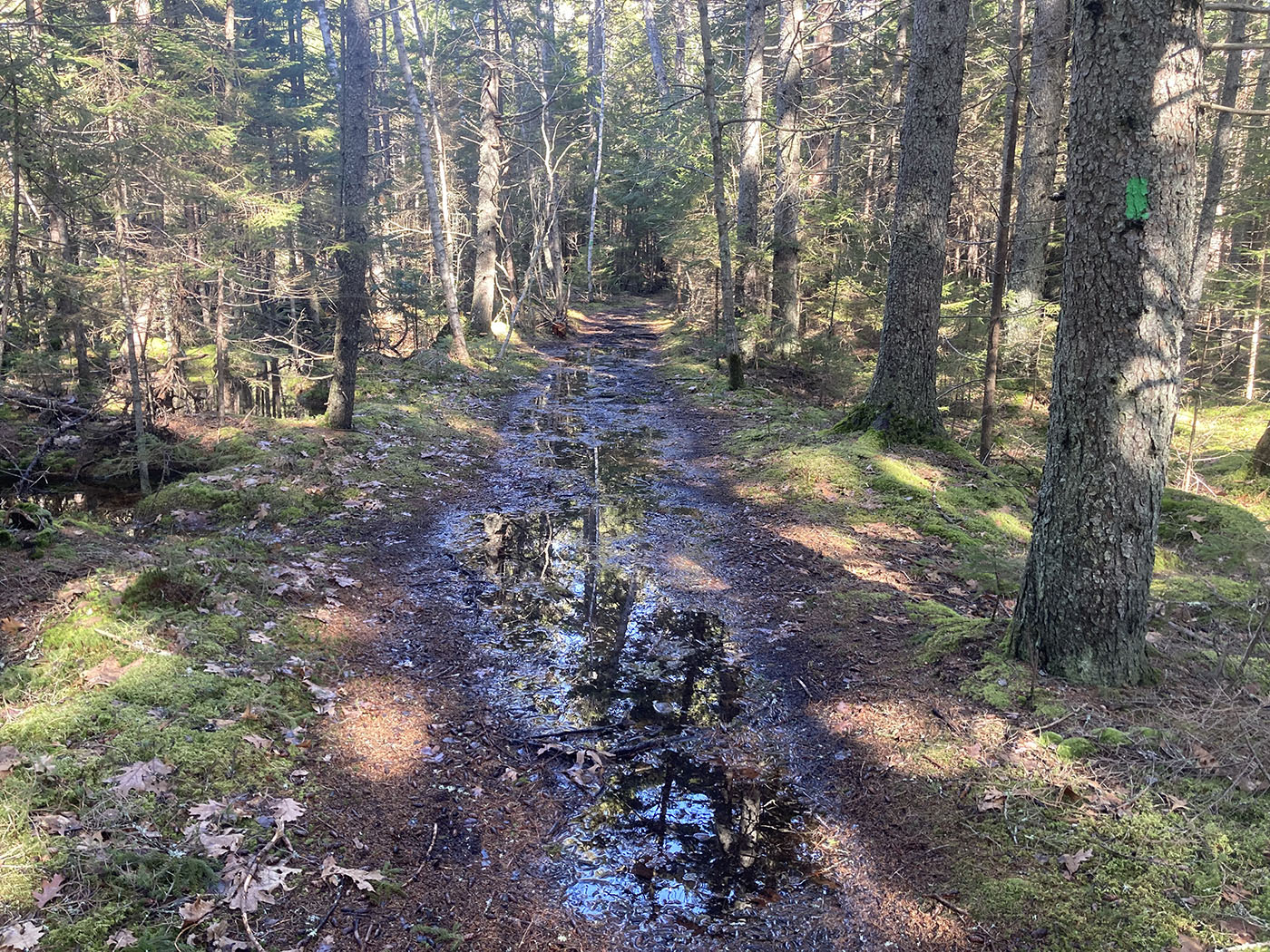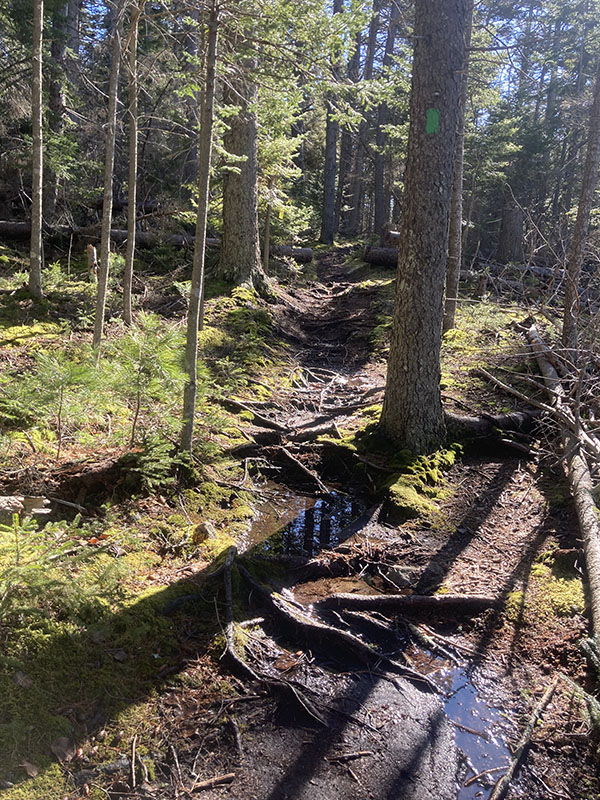
As we enter into March we can see the signs that winter is starting to fade into the rearview mirror. Temperatures are feeling warmer and daylight hours are longer, giving us more reasons to get outside. Spring and the months just before it are pivotal times for many ecosystems and are often a period in which wild spaces can experience a rise in stress.
The expression “mud season” is commonly used in Maine when referring to roadways and logging operations, but did you know that mud season also applies to trails? Many hiking trails throughout the state were originally built in a way that brought visitors to a destination in the shortest amount of time. That being said, forethought about how topography and soil composition might interact with increased foot traffic was often overlooked. As a result, many of our favorite trails that are flat and low lying or have steep climbs present us with obstacles in the form of water and mud. Whether the spring thaw is sending water down a fall line trail or the tread surface has become a soupy pit of organic matter, the end result is the same. Visitors avoid the inconvenience.
Oftentimes, unconsciously, hikers evade obstacles that their mind deems as uncomfortable or unsafe. This act is seldom a lingering thought in the mind of an outdoor enthusiast, but trail builders and planners are constantly studying what’s been dubbed “hiker psychology.” Understanding the patterns of visitors can help provide information about where certain sections of a trail may need to change to better serve the user group or the resource.

WALK THROUGH IT
The next time you’re out hiking during the shoulder seasons, please consider your surroundings while you explore. When you come up to a stretch of mud or water on the tread surface, try not to hug the edges of the trail to bypass it, but rather walk directly through it. This may be inconvenient and disagreeable, but it’s a small effort that can have a less dramatic impact on the landscape.
If hiker traffic ventures beyond the intended tread surface, people are ultimately spreading the zone of impact. It’s not uncommon for social trails or trail braiding to form in areas designed with a three foot tread surface to then hemorrhage to six feet wide. Expanding treadways to this degree has a lasting ripple effect. As the tread surface area increases, so too does the loss of vegetation and organic materials that help stabilize the environment.
LET WATER FLOW
It’s also important to refrain from adding any materials to muddy or wet sections of trail. Throwing down logs or stones to elevate foot traffic out of the mush may seem like a great solution, but without proper trail planning it can have a negative effect on the area. On trails, we never want to stop water from moving or absorbing as it should. Adding debris to mud can often trap water or change its intended path. Blockage or improper diverting can cause issues elsewhere on the trail and actually increase the section of mud that visitors are trying to avoid. When installing bog bridges or stepping stones on a wet trail, a level of thought should be put into placement and clearance of each structure to ensure that water still flows.
Getting outside during the spring months is imperative for outdoor recreationalists. For many of us it’s the time in which we shake off our winter dormancy and feel a sense of excitement for the days ahead. Mud season on trail is messy, but it can also be a time to observe countless wonders in nature. When hitting the trails this spring, be sure to wear footwear that can hold up against the obstacles and please try to do your part by staying on the intended path.
